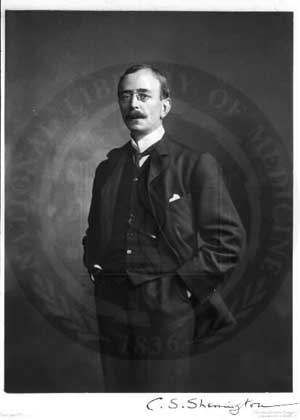
“We begin with Charles Scott Sherrington, an English physician who lived hundreds of years ago from 1857 to 1952. Sherington performed many experiments on reflex movements— the kind of movement that occurs when your doctor taps your leg just below the knee, causing a jerk. Sherrington used dogs for his research. He would pinch a dog’s leg to produce a withdrawal reflex. His dogs would flex the pinched leg while extending the others. Sherrington knew the reflex occurs when a sensory stimulus travels from the location of the pinch up to the dog’s spinal cord. There it activates a motor neuron that travels back down the dog’s leg and activates the muscles. Now Sherrington knew the distance the message had to travel and he also knew the speed of neural impulses that Dieter has criticized. So the reflex should take about as long as the message took to travel from the leg to the spinal cord and back. But the reflex took far longer than expected. Something was slowing down the reaction.
Now if one neuron connected directly to another, Dieter would tell you that there is no reason for any delay. He would be right. An electrical impulse could travel almost instantaneously between one neuron and the next. Sherrington theorized that the delay was caused by a tiny gap between the neurons that he called the synapse. But what happened at the synaptic gap? What was the reason for the delay? Even until the early 20th century, the prevailing view among scientists was that an electrical impulse somehow crossed this tiny gap. But that was before the work of Otto Loewi, who did a simple experiment that demonstrated conclusively that transmission can be chemical, and the idea for that experiment came to him in a dream.